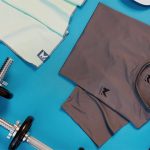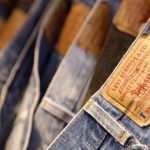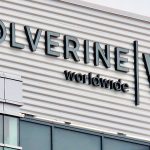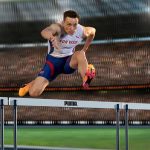December followed the recent trend in consumer habits with shoppers continuing to spend their dollars at luxury and department stores, as well as at wholesale clubs. If one statement could sum up the month it would probably be something along the lines of a shoulder shrug, as retailers saw moderate gains that, while certainly not a downward turn, were not up to the gains of December 2005.
As was to be expected with Christmas falling on a Monday, shoppers waited until the last minute to make their purchases for the final weekend, but still caused U.S. chain store sales to increase 3.1% on a year-over-year basis, based on a survey of 59 chain stores conducted by the International Council of Shopping Centers. The results bested the 2.5% increase forecast by ICSC for December and helped offset the weaker November results. For the two-month Holiday season (November and December combined), chain store sales posted a 2.8% gain, which was in line with ICSC's projections of a 2.5% to 3.0% gain for the season. By comparison, the 2005 Holiday season posted a 3.6% increase.
“More so than in past seasons, this Holiday season came down to the week before Christmas as consumers waited to the last minute to complete their shopping,” said Michael Niemira, ICSC's chief economist.
Leading sectors for the month were Luxury stores and Wholesale Clubs, which saw sales increase by 8.2% and 6.2%, respectively, for December. Department Stores continued to post healthy results as sales rose 3.6% in the month. As a result of December's weather being the warmest in five years, Apparel stores suffered and saw sales decline by 0.9% on average.
“Overall, this Holiday season was a moderate one for retailers with some sectors performing stronger than others. As we look towards January, we expect comp-store sales to increase by 2.5 to 3.0 percent as consumers begin to redeem their gift cards in earnest,” concluded Niemira.
The shift to lux that is leaving the middle gasping perhaps played out most prominently in the department store channel in December.
Saks, now divested of all but the Saks 5th Avenue and Club Libby Liu businesses, posted double-digit comps and sales gains for the month, while Nordstrom saw high-singles gains, and Neiman Marcus was not far behind. Federateds sales decrease was predicated by the closing of 78 stores in the past year, but a truer measure of the companys performance can be seen in the mid-singles comps gain for the month.
The move to better product was also quite evident in athletic footwear during the Holiday period as average selling prices in Sport Footwear rose nearly four percent versus the previous year period. Despite posting a decline for the season and some late-season promoting, outerwear jackets & parkas actually saw a mid-single-digit increase in ASP for Holiday as well.
But retailers in the sporting goods and athletic footwear and apparel sector also got a boost during the Holiday season from some key footwear launches and other key products that may offset in part some major concerns about outerwear and winter hardgoods sales hurt by warmer weather throughout much of the U.S. While Denver got slammed multiple times, much of the country east of the Rockies was in short sleeves for the holidays.
Based on an analysis of the SportScanINFO data compiled for the six-week Holiday period from Thanksgiving weekend through New Years weekend, SportsOneSource estimates that sales of Sport Footwear increased in the mid-single-digits in 2006 when compared to the same period last year.
On a comp store basis, SOS estimates that Sport Footwear sales were up in the low-single-digits. The increase came on the strength of the Heelys phenomenon, which posted strong triple-digit growth, as well as higher average selling prices and some key Nike launches. Excluding the Heelys business, Sport Footwear sales were only up in low-singles and would have declined a bit on a comp store sales basis, according to SportsOneSource estimates. It appears that Sport Footwear got a late season boost from gift card sales earlier in the month as sales excluding Heelys rose in the mid-singles for the week after Christmas, roughly three times the growth for the overall season. Surprisingly, the kids that wanted Heelys probably got them under the tree, because sales of the product plunged the week after Christmas compared to sales for the previous four weeks, but sales were still considerably higher than the year-ago period.
The Athletic Footwear sector, which excludes many of the casual and outdoor categories found in the broader Sport Footwear sector, saw ASPs rise nearly six percent, with sales of athletic shoes over $100 increasing in the mid-30s, while sales of product under $40 declined in the high-singles for the period.
Nike held nine of the top ten spots in the top sellers list for the Holiday period, with the companys Jordan brand taking the top four spots with the Jordan Retro 5 in White/Red/Black and the Dub-Zero product driving volume over the last few weeks. Under Armours launch of their baseball cleated program in December also added some lift to the month. Despite the absence of the ubiquitous click-clack marketing program that accompanied the brands football footwear launch, Under Armour still managed to grab market share in the high-teens and certainly helped with the high-double-digit increase in baseball cleated footwear sales for the month.
Not surprisingly, sales of snow boots were down in the high-20s during the six-week Holiday period. Classics were also down for the period, off in the mid-teens, but the declines appear to be moderating as the category starts to anniversary the declines of late last year. Much of the decline in Classics is reflected in the increase in the Lifestyle Fashion Athletic category, which also got a nice boost during the Holiday period. Skechers, Puma, and K-Swiss hold the top market share spots here, but adidas joined Skechers as the biggest share gainers for the period in the category.
Apparel sales were certainly hurt by the warmer weather during the Holiday sales period, resulting in a lot of bargains the week leading up to Christmas and even more so the week after. The outerwear category was a key indicator of the broader issue, declining in the low-teens during the six-week Holiday period, offsetting in part many of the gains seen by retailers late in the retail third quarter when lower October temps fueled early outerwear sales. Ski and snow sports outerwear was perhaps the hardest hit with a strong double-digit decrease, but the outdoor jackets/parkas category actually saw a nice gain for the period, thanks in large part to the strength of the Denali jacket from The North Face, which was one of those “must-have” gift items for the holidays this year. Camouflage outerwear also fared better than the category as a whole, posting an increase in the mid-teens for the Holiday period.
Early season success of the sweats/fleece category that was driven by Under Armours performance product and the strength of hoodies gave way to the weather, as well, as Holiday sales in the category declined in the high-single-digits. Hoodies ended up down in the low-singles for the six-week Holiday period after a high-singles gain in the third quarter. There is some anecdotal evidence that strong early fall sales in hoodies, performance fleece, and outerwear may have cut into inventories required to drive Holiday sales.
Based on analysis of the SportScanINFO data, Performance Apparel sales were forecast up in the high-single-digits for the Holiday period, with continued strength in compression product (up mid-teens), more than offsetting declines in looser fitting long sleeve product (down mid-teens). Again, the sector saw strength at Sporting Goods retail, but suffered at Mid-Tier and Discount/Mass.
Looking at the ICSC data, teen retailers American Eagle, Abercrombie & Fitch, Aeropostale, and Zumiez all had a strong December, while Pacific Sunwear, Hot Topic, and the Gap, all posted comp declines.
Though not included in the Teen Retailer channel, but likely stealing some of its business, Urban Outfitters reported strong Holiday sales, including both November and December, though comp sales were off. The companys Free People chain had a good December, with comps up 4%, but its established chains Anthropologie and Urban Outfitters had a tougher go, down 9% and 2%, respectively. Overall company comps for the month were down 5%, while overall sales increased 15%.
Pacific Sunwear of California, Inc. posted a sales increase for the month, despite decreasing comparable sales at both its PacSun and d.e.m.o. formats. Total sales for the five weeks of fiscal December were $250.5 million, an increase of 3.3% over total sales of $242.4 million during the same period last year. Total company same-store sales decreased 3.2% during the same period. By concept, PacSun same-store sales decreased 2.1% and demo same-store sales decreased 9.4% compared to the same five week period last year.
At PacSun, girl's apparel comped down in the mid-singles, with guys apparel up low-singles. Management said in a recorded statement that “the footwear business improved during the month,” though it still finished down in the low-teens. The guy's footwear business “improved to down mid-teens” and the girls “improved to down mid-single-digits.” Accessories were down mid-singles for girls and “down slightly” for guys during the month.
For demo, same-store sales for the month were down high-single-digits for both girls and guys.
For the month, Pacific Sunwear saw total transactions per comp store grow in the low-singles, while the average transaction value was down mid-single-digits. The average unit retail was down mid-single-digits and the average items sold per transaction were down low-single-digits.
Zumiez Inc., meanwhile, continued its impressive hot streak with total net sales for the month jumping 40.5% to $62.5 million from $44.5 million during last years month. The company's comparable store sales increased 11.5% for the period, on top of a 20.9% gain last year.
Management attributed the overall sales growth to new stores and comparable store sales gains, which were driven by an increase in average unit retail and in-store transactions. Men's sales were said to be the primary positive contributor for the month, although “all other departments had positive comps.”
Looking at some of the categories that drive the action sports sector at retail, the skate/surf category in footwear continues to post big gains. Skate is now clearly established at sporting goods and is now starting to see big gains in the Athletic/Urban Specialty channel as well. Amazing what one rap song can do for a brand and category. The Family Footwear channel, which is a bit more mature in this business, had a surprising decline in skate footwear for the Holiday period, but that may be due in large part to broader distribution in the market. Overall skate footwear sales were up in the low 30s for the six-week Holiday period.
ICSC showed that the Mid-Market channel followed the trends seen in overall retail, posting both overall and comp sales gains, though not as strong as the improvements seen one year ago. Kohls led the comparable store gains, while JC Penneys overall sales held back the double-digit gains seen a the other retailers.
Looking again at the SportScanINFO data, SportsOneSource estimates that overall licensed apparel sales were up in the mid-singles for the six-week Holiday period, getting a boost from a strengthening NCAA business, particularly in the Athletic/Urban Specialty, Internet, and Mid-Tier Department Store channels. The NFL business was also up in the low- to mid-singles on strength in the mall. The NHL business jumped for the period, but saw all the gains coming out of Sporting Goods and the Mid-Tier channel. MLB was up in the low-singles, but NBA sales continued to suffer, down in the high-singles for the Holiday period.
Excluding Wal-Mart, ICSC said their survey showed that December comps were up 4.7% for the month. While the bulk of the Discount/Mass Retailer channel is accounted for by Wal-Mart, strong improvements on the overall sales line by Target, Ross, and the TJX Companies supplied the high-singles gain for the channel. Wal-Mart did manage to reverse the comp decrease it reported last month, beating the 0% to 1% comparable sales gain guidance.
Warehouse retailers as a whole outpaced the rest of the channels with Costco pushing the gains here. Costco benefited from an extra day of selling in the month due to the New Years Holiday that boosted comparable sales by 3 percentage points.
ICSC is forecasting a 2.5% to 3.0% comp sales increase for January.
To view the complete chart of December Comp results, click here














